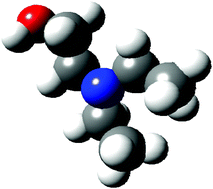New tools for the analysis of refractive index measurements in liquid mixtures. Application to 2-diethylaminoethanol + water mixtures from 283.15 to 303.15 K†
Abstract
Drawing on methods currently used in chemical thermodynamics, apparent and partial molar refractions of


 Please wait while we load your content...
Please wait while we load your content...